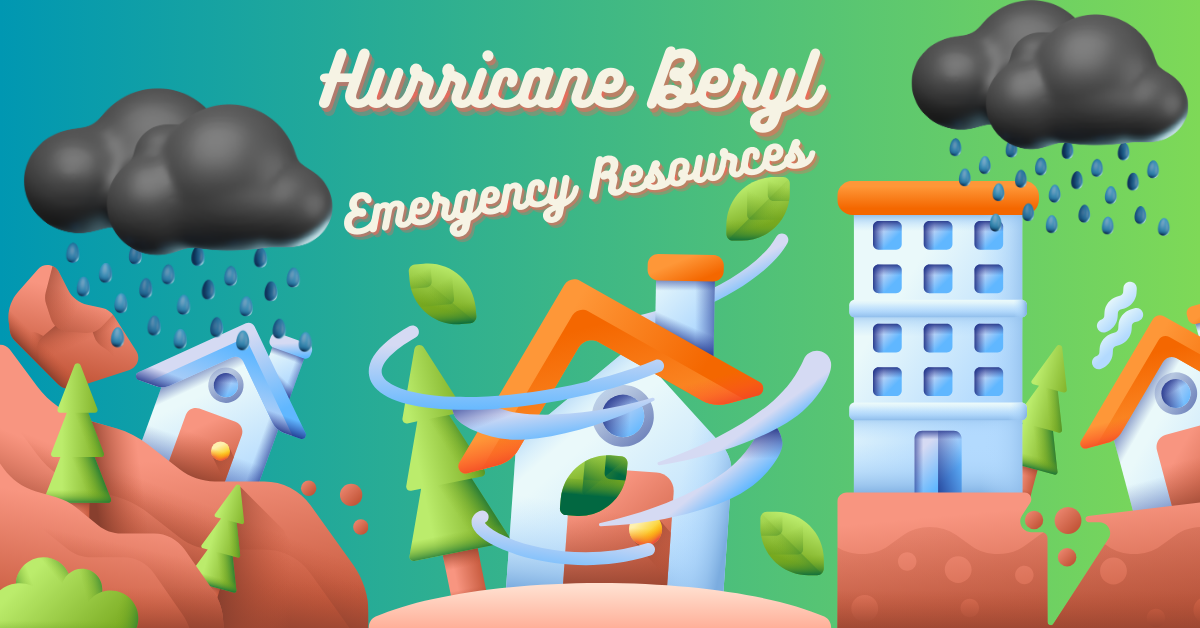Introduction
Hurricanes are one of the most destructive natural disasters, and Hurricane Beryl is no exception. As communities prepare to face the wrath of this powerful storm, knowing where to find Hurricane Beryl emergency resources can make the difference between life and death. Whether you’re evacuating, seeking shelter, or looking for disaster relief after the storm passes, having access to the right information is crucial.
In this comprehensive guide, we’ll walk you through the most important Hurricane Beryl emergency resources, including evacuation plans, emergency shelters, disaster relief services, and safety tips. Preparation is key to surviving a storm of this magnitude, and by following these guidelines, you’ll be better equipped to protect yourself and your family from the dangers of Hurricane Beryl.
1. What is Hurricane Beryl?
Hurricane Beryl is a major tropical cyclone that poses a serious threat to communities in its path. Known for its strong winds, torrential rain, and potential for severe flooding, Hurricane Beryl has the capacity to cause widespread damage to homes, infrastructure, and power grids. As it moves toward heavily populated areas, the need for reliable Hurricane Beryl emergency resources becomes even more critical.
The storm has been categorized as a Category 3 hurricane, with wind speeds reaching up to 120 miles per hour. Coastal regions are at the greatest risk of storm surges, while inland areas face the danger of flash floods and fallen trees. The government and emergency services are working round the clock to ensure that residents have access to the necessary Hurricane Beryl emergency resources, but personal preparation is essential.
Being aware of evacuation zones, having an emergency kit ready, and knowing where to find emergency shelters for Hurricane Beryl are some of the first steps toward survival. As authorities issue warnings and updates, it’s crucial to follow their guidance and stay informed about the storm’s progress. This overview sets the stage for understanding how to access and use emergency resources effectively during the storm.
2. How to Prepare for Hurricane Beryl: Essential Emergency Resources
Preparing for Hurricane Beryl starts with gathering essential emergency resources and having a plan in place. The more prepared you are, the better your chances of staying safe during the storm. Here are some critical steps you should take to get ready for Hurricane Beryl:
- Create an Emergency Kit: Your emergency kit should include water (at least one gallon per person per day), non-perishable food, a flashlight, extra batteries, first aid supplies, important medications, and hygiene products. Don’t forget to include important documents such as identification and insurance papers in a waterproof container.
- Know Your Evacuation Zone: It’s crucial to be aware of your local evacuation zones and routes. Authorities will issue evacuation orders based on the severity of Hurricane Beryl, so stay tuned to local news for updates. Having a clear evacuation plan is one of the key Hurricane Beryl emergency resources that could save lives.
- Secure Your Home: Reinforce windows with storm shutters or plywood, bring in outdoor furniture, and secure any loose items that could become projectiles during the storm. Make sure your home is as protected as possible before Hurricane Beryl arrives.
- Backup Power Supply: Power outages are common during hurricanes. If possible, invest in a generator or portable power bank to keep your essential devices charged. This can be a lifesaving emergency resource during Hurricane Beryl, especially if you need to stay in communication with family or emergency services.
- Stay Informed: Keep a battery-powered or hand-crank radio with you to receive updates from local authorities. Staying informed about Hurricane Beryl’s path and intensity is one of the most important ways to stay safe.
By following these steps, you’ll be better prepared for Hurricane Beryl and have the emergency resources you need to ride out the storm.
3. Top 7 Emergency Resources for Hurricane Beryl Survivors
When Hurricane Beryl strikes, having access to reliable emergency resources can mean the difference between safety and danger. Here are the top 7 essential emergency resources you need to know about:
- Local Emergency Shelters: During Hurricane Beryl, many schools, community centers, and public buildings are converted into emergency shelters. These shelters provide a safe place for those who need to evacuate their homes. You can find nearby shelters through your local emergency management agency or the Red Cross.
- FEMA Disaster Relief: The Federal Emergency Management Agency (FEMA) offers disaster relief services for those affected by hurricanes. From financial assistance for home repairs to temporary housing, FEMA is a key resource during and after Hurricane Beryl.
- The American Red Cross: The Red Cross provides a range of services, including emergency shelter, food, and medical care. They are one of the leading organizations offering Hurricane Beryl emergency resources, and they also offer guidance on how to prepare for and recover from the storm.
- Local Government Websites: Your local government’s website is a critical source of information for evacuation orders, shelter locations, and other emergency resources. Stay updated by visiting your city or county’s official emergency page.
- Disaster Recovery Centers: After Hurricane Beryl, Disaster Recovery Centers (DRCs) will be set up to help survivors apply for disaster assistance, including financial aid for repairs and temporary housing. These centers are usually run by FEMA and local government agencies.
- Food Distribution Services: Non-profits and local governments often set up food distribution centers for those in need during and after a hurricane. Feeding America and local food banks can be valuable Hurricane Beryl emergency resources for food and water supplies.
- Emergency Hotlines: It’s important to have the contact information for emergency hotlines like 911, FEMA’s disaster assistance line, and local crisis hotlines. These can provide immediate help in case of injury, emergency, or evacuation during Hurricane Beryl.
These 7 emergency resources are crucial for surviving Hurricane Beryl and accessing help when you need it most.
4. Where to Find Emergency Shelters During Hurricane Beryl
Finding emergency shelters during Hurricane Beryl can be a lifesaving measure for those forced to evacuate their homes. These shelters offer a safe, secure place to ride out the storm and provide basic necessities like food, water, and medical care.
To locate emergency shelters for Hurricane Beryl, here are some of the best resources:
- Local Emergency Management Agencies: Your local emergency management agency will have up-to-date information on shelter locations in your area. Many agencies will share this information via their websites, social media, and emergency broadcasts.
- American Red Cross Shelter Finder: The American Red Cross provides a shelter locator tool on their website, allowing you to find the nearest shelter based on your location. The tool is updated in real-time as shelters open during Hurricane Beryl.
- FEMA App: The FEMA app is another excellent tool for finding nearby emergency shelters. The app provides shelter locations, safety tips, and weather alerts.
- Local News: During Hurricane Beryl, local TV and radio stations will broadcast information about shelter openings. Be sure to tune in regularly for updates.
It’s important to have your evacuation plan and shelter destination ready well in advance. Evacuating early and knowing where to go can save valuable time and help you avoid the worst of Hurricane Beryl.
Conclusion
Surviving Hurricane Beryl and minimizing its impact requires careful planning and access to essential emergency resources. From preparing your home and gathering supplies to knowing where to find emergency shelters and disaster relief services, being informed is the key to safety.
By following the steps outlined in this guide, you’ll be better prepared for Hurricane Beryl and have the resources you need to protect yourself and your loved ones. Whether it’s evacuation plans, safety tips, or post-storm relief, this comprehensive guide provides everything you need to know to navigate the challenges posed by Hurricane Beryl.
Stay safe, stay informed, and make use of the available Hurricane Beryl emergency resources to ensure that you, your family, and your community can weather the storm and recover quickly
FAQs About Hurricane Beryl Emergency Resources
- What are the essential emergency resources for Hurricane Beryl?
The most essential emergency resources during Hurricane Beryl include emergency shelters, evacuation plans, food and water distribution services, FEMA assistance, and disaster recovery centers. These resources ensure that residents have access to shelter, food, and medical care during and after the storm. - How can I find emergency shelters during Hurricane Beryl?
You can find emergency shelters through local government websites, the FEMA app, and the American Red Cross Shelter Finder tool. These sources provide real-time updates on available shelters in your area. - What should be in my emergency kit for Hurricane Beryl?
Your emergency kit should include water, non-perishable food, a flashlight, batteries, a first aid kit, important medications, hygiene items, and important documents. You may also want to include a phone charger, cash, and any necessary items for infants or pets. - When should I evacuate during Hurricane Beryl?
Evacuations are typically ordered based on the severity of the hurricane and the risk to specific zones. It’s crucial to follow evacuation orders issued by local authorities. If you are in a coastal or low-lying area, evacuate as soon as authorities give the order. - How do I access FEMA disaster relief after Hurricane Beryl?
You can apply for FEMA disaster relief online through their website or by visiting a local Disaster Recovery Center. FEMA offers assistance for home repairs, temporary housing, and other needs that arise from hurricane damage. - What safety tips should I follow during Hurricane Beryl?
During Hurricane Beryl, stay indoors and away from windows. Avoid driving through flooded areas and use generators safely to prevent carbon monoxide poisoning. Always follow instructions from local authorities. - What are the signs that I should seek help after Hurricane Beryl?
If you experience severe damage to your home, injuries, or power outages lasting more than a few days, contact local emergency services or FEMA for assistance. Visit a Disaster Recovery Center to apply for aid or find nearby help. - Where can I get food and water after Hurricane Beryl?
After Hurricane Beryl, food and water distribution centers are typically set up by local governments and non-profits like Feeding America and the Red Cross. You can visit local emergency management websites for specific locations. - How can I prepare my home for Hurricane Beryl?
To prepare your home, secure windows with storm shutters or plywood, clear gutters, and bring in outdoor furniture. If possible, use sandbags to protect against flooding, especially in low-lying areas. - Can I stay at home during Hurricane Beryl, or should I evacuate?
Whether you stay or evacuate depends on your location and the severity of the storm. If you’re in a designated evacuation zone, it’s important to leave for a safer area. Always follow the instructions of local authorities and stay informed about Hurricane Beryl’s path.




